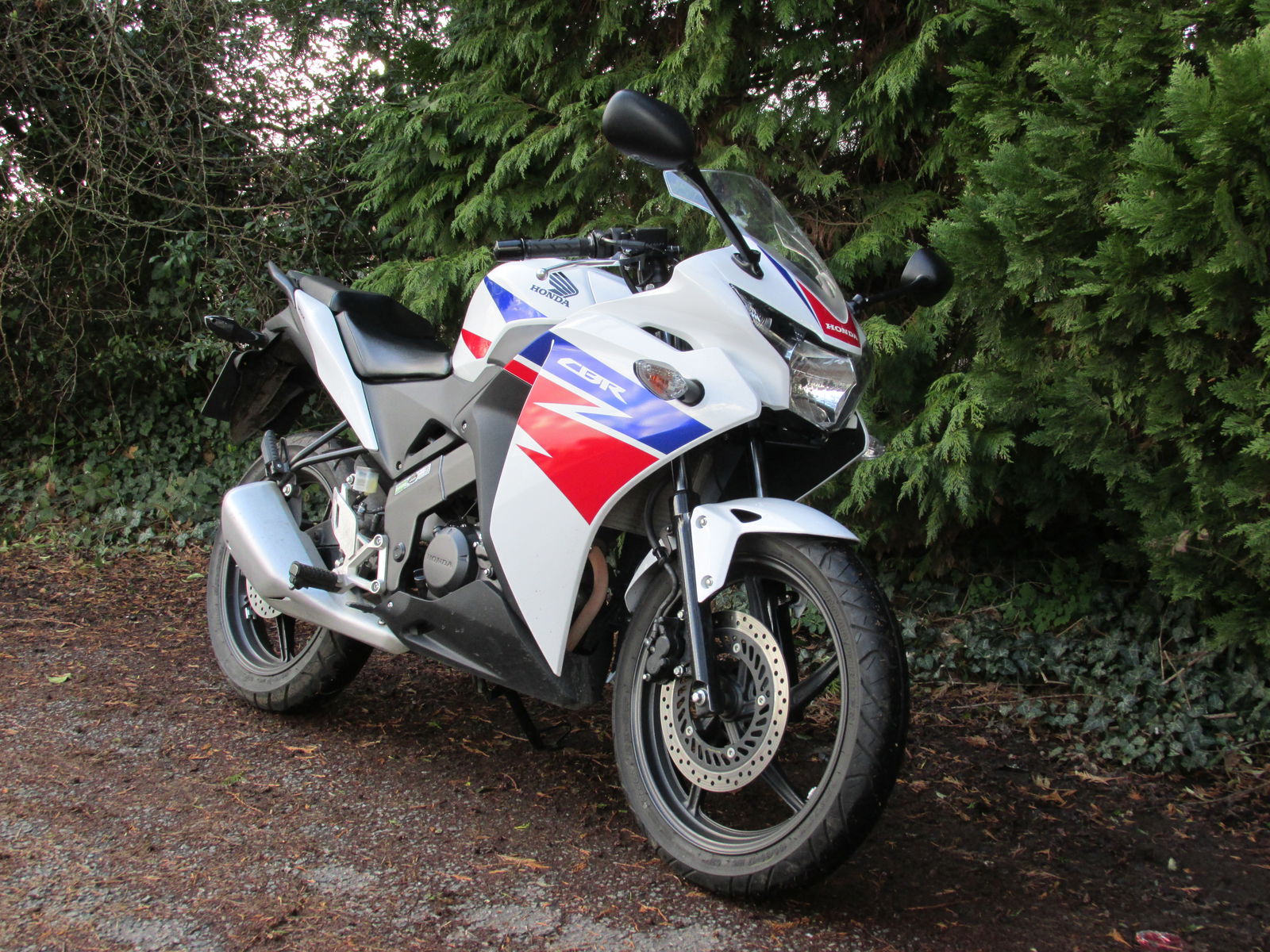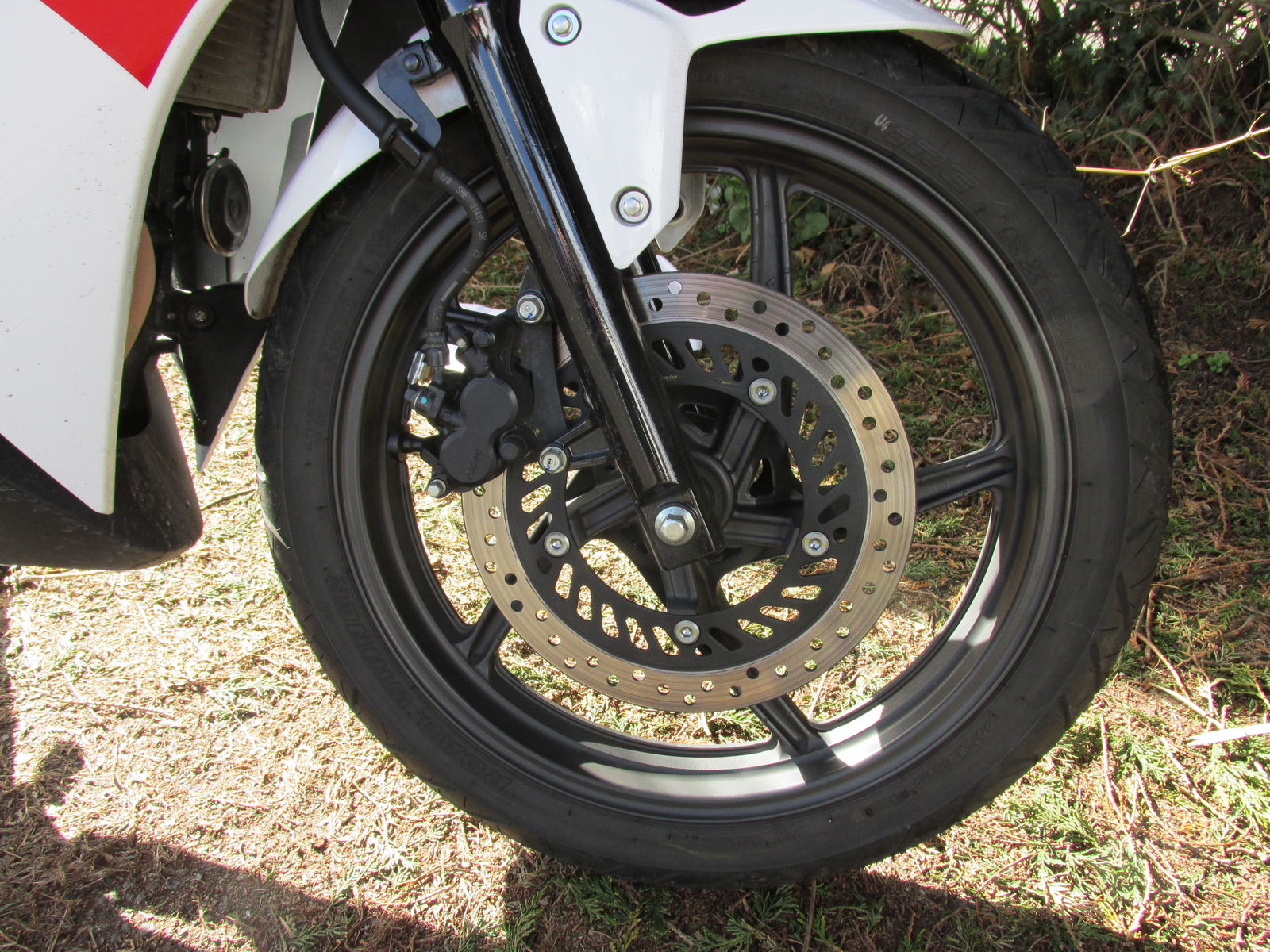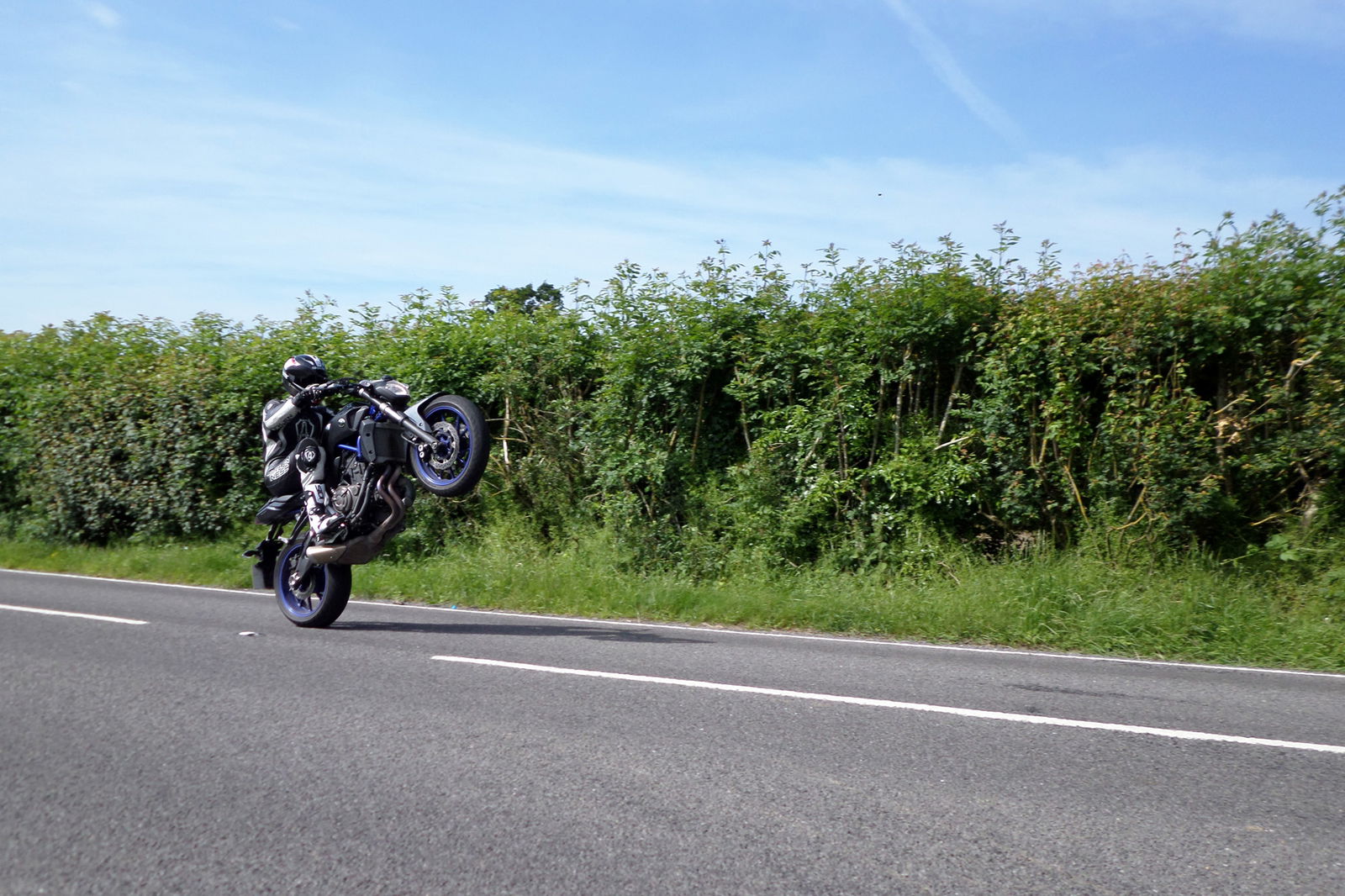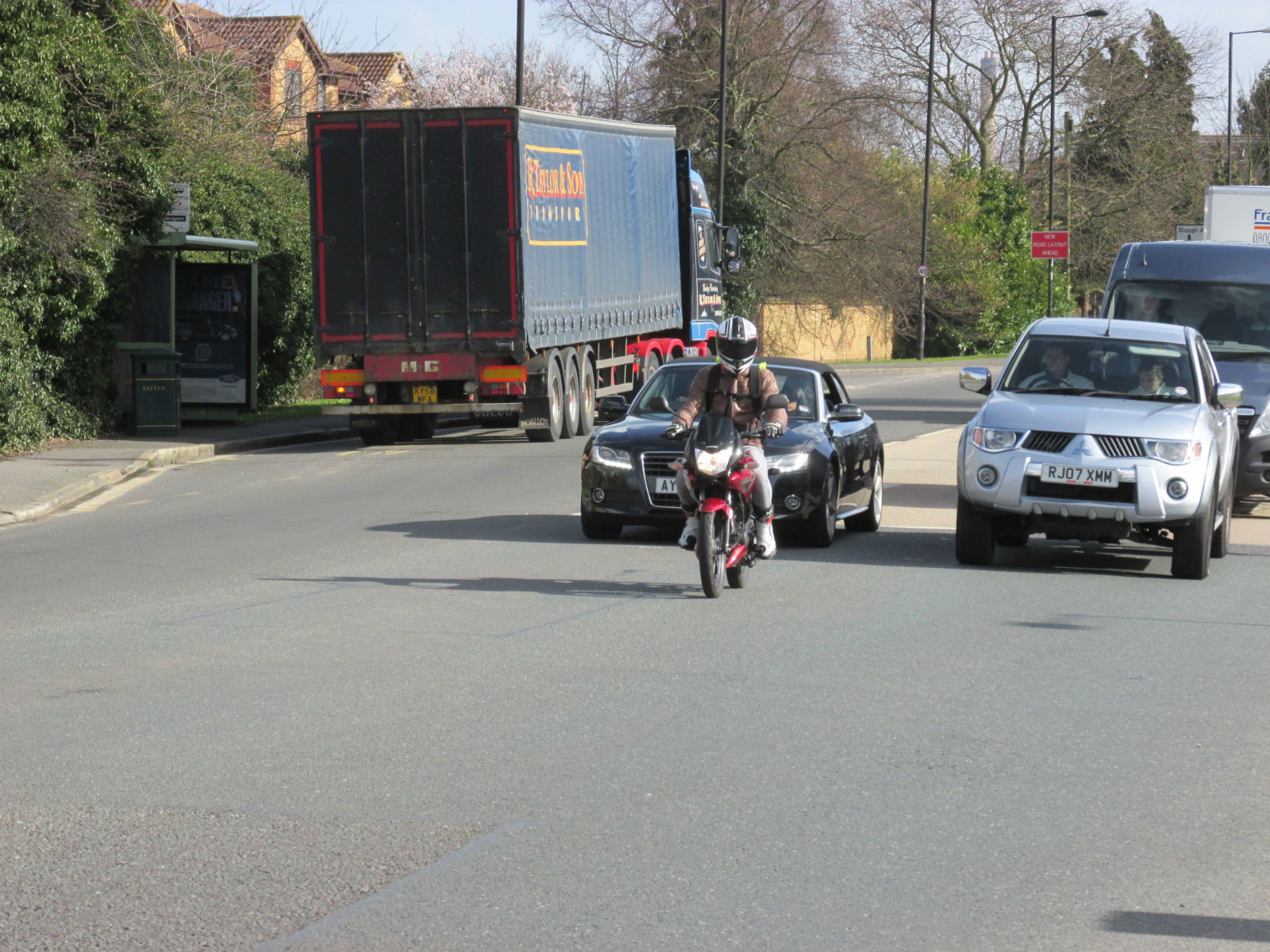Review: One week with a Honda CBR125R
Two years stuck on this 125 wouldn't be so bad

MOTORCYCLING seems to have sleepwalked into a potential disaster. Over a year after it became the case, many long-time riders still seem blissfully unaware that the route they took into motorcycling is closed.
No more passing a test at 17 and getting on a big bike, even one restricted to 33bhp. No one under 19 is allowed to ride anything bigger than a 125, no matter what they do. Yes, they can take a test and get a full licence, but only for… a 125.
It’s crap and worrying, isn’t it? It means never have 125s played a bigger role in ensuring the future health of motorcycling. They’d better be bloody good.
That’s presumably why Yamaha has made such fanfare about its new MT-125, with a competition offering young riders a place on the press launch.
The MT-125 is an important new offering, but it’s expected to cost around £4,000, while the YZF-R125, which used the same engine and chassis, is £4,349 plus on-the-road charges. To a 17-year-old getting the bus to college, that’s a lot.
Which is why I recently thought I’d spend a week with the Honda’s CBR125R. It’s a little more modest-looking than the YZF-R125 but, at £3,599 on the road, nearly a thousand pounds less.
Price isn’t the only thing that’s lower. Putting myself in the place of a 17-year-old, I felt a little resentful as I first rode the CBR. The EU says I am restricted to 125cc and 15hp for the next two years. That’s bad enough. So why has Honda provided for me a 125 which makes 13hp. Surely it must be possible to tune the engine for my missing 2hp?
If you’d been riding bigger bikes for years, any 125 has a tough job of impressing. It already feels desperately slow, without the added knowledge that it’s not even a very powerful 125.
But over the next few days a recalibration process took place. As my expectation adjusted, I discovered that the CBR delivers its power exactly as a sports bike should, albeit in reduced quantities.
It builds smoothly from not very much low down to a bit more on the mid-range. Most importantly, there’s something at the top end worth chasing, a comparative rush toward the 11,000rpm redline.
After a day or two, I really began to enjoy chasing. It may only make 13hp, but it makes it well. It’s easy for 40-somethings like me to dismiss four-stroke 125s compared to the two-strokes of our youth. I remember two-stroke 125s which made about 20hp from 8,000-10,000rpm and nothing anywhere else. They might have been faster, but that doesn’t equal more fun to ride (Try telling a 17-year-old that. I wouldn’t have listened either).
Neither was I bothered any more about the missing 2hp. Numbers pale to insignificance in the glow of an engaging engine.
The chassis and suspension feel sports-bike like too, firm and taught, with none of the sag and bounce of commuter 125s like Honda’s CBF.
The single-disc front and rear brakes aren’t going to stun with their power, bite or progression, but they’re perfectly capable of bringing the 137kg CBR to a rapid halt.
The bars are high for sports bike but I like that too. This is a novice machine and I’d much rather do the manoeuvres part of the bike test sitting upright than hunched over.
It’s handsome enough to take some pride in too – a vast improvement on the weedy looking original CBR125 made from 2004 to 2006.
Compared to the YZF-R125, which looks every inch the real deal, the CBR is a little commuter-ish in places. The fork top bolts are chromed and budget-looking. The big gaps left by the inner fairing, through which you can see the ground, create an overall weedier and less designed impression than the R125 gives. But that’s where your several-hundred-pound saving went.
As my week with the CBR went on, commuting across London, taking a ride into the country and doing a few motorway miles, the motorcycle licence rules didn’t seem quite so appalling. I thought: ‘I could spend two years riding this. It wouldn’t be my choice but neither would it be the end of the world. I would still thoroughly enjoy motorcycling.’
Crucially, it wouldn’t put me off motorcycling either. I hope the same is true of the average 17-year-old would rider.
MOTORCYCLING seems to have sleepwalked into a potential disaster. Over a year after it became the case, many long-time riders still seem blissfully unaware that the route they took into motorcycling is closed.
No more passing a test at 17 and getting on a big bike, even one restricted to 33bhp. No one under 19 is allowed to ride anything bigger than a 125, no matter what they do. Yes, they can take a test and get a full licence, but only for… a 125.
It’s crap and worrying, isn’t it? It means never have 125s played a bigger role in ensuring the future health of motorcycling. They’d better be bloody good.
That’s presumably why Yamaha has made such fanfare about its new MT-125, with a competition offering young riders a place on the press launch.
The MT-125 is an important new offering, but it’s expected to cost around £4,000, while the YZF-R125, which used the same engine and chassis, is £4,349 plus on-the-road charges. To a 17-year-old getting the bus to college, that’s a lot.
Which is why I recently thought I’d spend a week with the Honda’s CBR125R. It’s a little more modest-looking than the YZF-R125 but, at £3,599 on the road, nearly a thousand pounds less.
Price isn’t the only thing that’s lower. Putting myself in the place of a 17-year-old, I felt a little resentful as I first rode the CBR. The EU says I am restricted to 125cc and 15hp for the next two years. That’s bad enough. So why has Honda provided for me a 125 which makes 13hp. Surely it must be possible to tune the engine for my missing 2hp?
If you’d been riding bigger bikes for years, any 125 has a tough job of impressing. It already feels desperately slow, without the added knowledge that it’s not even a very powerful 125.
But over the next few days a recalibration process took place. As my expectation adjusted, I discovered that the CBR delivers its power exactly as a sports bike should, albeit in reduced quantities.
It builds smoothly from not very much low down to a bit more on the mid-range. Most importantly, there’s something at the top end worth chasing, a comparative rush toward the 11,000rpm redline.
After a day or two, I really began to enjoy chasing. It may only make 13hp, but it makes it well. It’s easy for 40-somethings like me to dismiss four-stroke 125s compared to the two-strokes of our youth. I remember two-stroke 125s which made about 20hp from 8,000-10,000rpm and nothing anywhere else. They might have been faster, but that doesn’t equal more fun to ride (Try telling a 17-year-old that. I wouldn’t have listened either).
Neither was I bothered any more about the missing 2hp. Numbers pale to insignificance in the glow of an engaging engine.
The chassis and suspension feel sports-bike like too, firm and taught, with none of the sag and bounce of commuter 125s like Honda’s CBF.
The single-disc front and rear brakes aren’t going to stun with their power, bite or progression, but they’re perfectly capable of bringing the 137kg CBR to a rapid halt.
The bars are high for sports bike but I like that too. This is a novice machine and I’d much rather do the manoeuvres part of the bike test sitting upright than hunched over.
It’s handsome enough to take some pride in too – a vast improvement on the weedy looking original CBR125 made from 2004 to 2006.
Compared to the YZF-R125, which looks every inch the real deal, the CBR is a little commuter-ish in places. The fork top bolts are chromed and budget-looking. The big gaps left by the inner fairing, through which you can see the ground, create an overall weedier and less designed impression than the R125 gives. But that’s where your several-hundred-pound saving went.
As my week with the CBR went on, commuting across London, taking a ride into the country and doing a few motorway miles, the motorcycle licence rules didn’t seem quite so appalling. I thought: ‘I could spend two years riding this. It wouldn’t be my choice but neither would it be the end of the world. I would still thoroughly enjoy motorcycling.’
Crucially, it wouldn’t put me off motorcycling either. I hope the same is true of the average 17-year-old would rider.
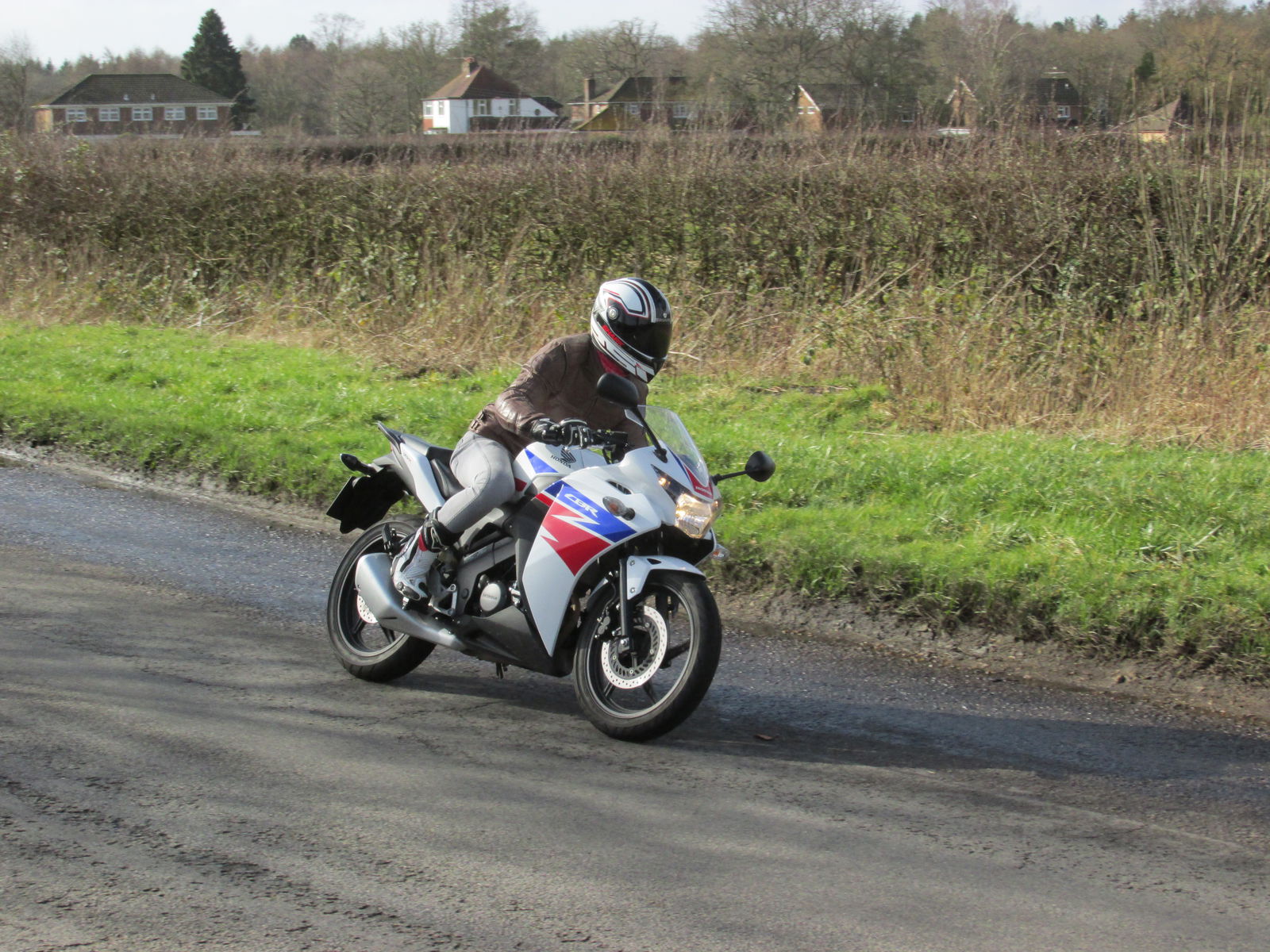
MOTORCYCLING seems to have sleepwalked into a potential disaster. Over a year after it became the case, many long-time riders still seem blissfully unaware that the route they took into motorcycling is closed.
No more passing a test at 17 and getting on a big bike, even one restricted to 33bhp. No one under 19 is allowed to ride anything bigger than a 125, no matter what they do. Yes, they can take a test and get a full licence, but only for… a 125.
It’s crap and worrying, isn’t it? It means that never have 125s played a bigger role in ensuring the future health of motorcycling. They’d better be bloody good.
That’s presumably why Yamaha has made such fanfare about its new MT-125, with a competition offering young riders a place on the press launch.
The MT-125 is an important new offering, but it’s expected to cost around £4,000, while the YZF-R125, which uses the same engine and chassis, is £4,349 plus on-the-road charges. To a 17-year-old getting the bus to college, that’s a lot.
Which is why I thought I’d spend a week with the Honda’s CBR125R to find out if that's a viable alternative. It’s a little more modest-looking than the YZF-R125 but, at £3,599 on the road, nearly a thousand pounds less.
Price isn’t the only thing that’s lower. Putting myself in the place of a 17-year-old, I felt a little resentful as I first rode the CBR. The EU says I am restricted to 125cc and 15hp for the next two years. That’s bad enough. So why has Honda provided for me a 125 which makes 13hp. Surely it must be possible to tune the engine for my missing 2hp?
If you’re used to bigger bikes, any 125 has a tough job of impressing. It already feels desperately slow, without the added knowledge that it’s not even a very powerful 125.
But over the next few days a recalibration process took place. As my expectation adjusted, I discovered the CBR delivers its power exactly as a sports bike should, albeit in reduced quantities.
It builds smoothly from not very much low down to a bit more in the mid-range. Most importantly, there’s something at the top end worth chasing, a comparative rush toward the 11,000rpm redline.
After a day or two, I really began to enjoy chasing it. The CBR may only make 13hp, but it makes it well. It’s easy for 40-somethings like me to dismiss four-stroke 125s as gutless compared to the two-strokes of our youth. But I remember two-stroke 125s which made about 20hp from 8,000-10,000rpm and nothing anywhere else. They might have been faster, but that doesn’t equal more fun to ride (Try telling a 17-year-old that. I wouldn’t have listened either).
Neither was I bothered any more about the missing 2hp. Numbers don't matter when you have an engaging engine.
The chassis and suspension feel sporty too, firm and taught, with none of the sag and bounce of commuter 125s like Honda’s CBF.
The single-disc front and rear brakes aren’t going to stun with their power, bite or progression, but they’re perfectly capable of bringing the 137kg CBR to a rapid halt.
The bars are high for a sports bike but that seems desirable in a learner machine. I’d much rather practice for the manoeuvres test sitting upright than hunched over.
It’s handsome enough to take some pride in too – a vast improvement on the weedy looking original CBR125 made from 2004 to 2006.
Next to the YZF-R125, which looks every inch the real deal, the CBR is a little commuter-ish in places. The fork top bolts are chromed and cheap-looking. The big gaps left by the inner fairing, through which you can see the ground, create an overall weedier and less designed impression than the R125 gives. But that’s where your several-hundred-pound saving went.
As my week with the CBR went on, commuting across London, taking a ride into the country and doing a few motorway miles, the motorcycle licence rules didn’t seem quite so appalling.
It will cruise consistently at an indicated 70mph whereas commuters like the CBF125 typically only do about 65mph. If you intend to do motorway miles, that's a deal-breaker.
I thought: ‘I could spend two years riding this. It wouldn’t be my choice but neither would it be the end of the world. I would still thoroughly enjoy motorcycling.’
Crucially, buying and riding one of these for two years isn't a prospect that would put me off motorcycling. I hope the same is true of the average 17-year-old would-be rider.
Model tested: Honda CBR125R
Price: £3,599 OTR
Power: 13hp
Torque: 7.6lbft
Fuel economy on test: 91.5mpg
Tank capacity: 13 litres
Seat height: 793mm
Colours: red, red/white/blue
Availability: Now
